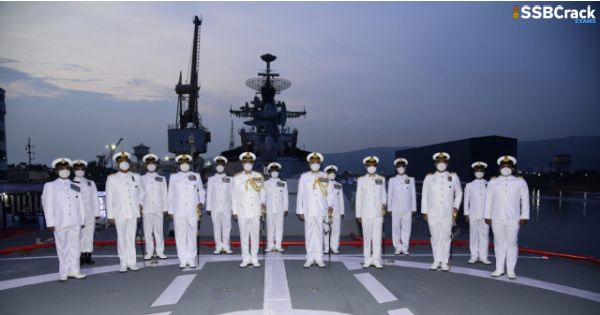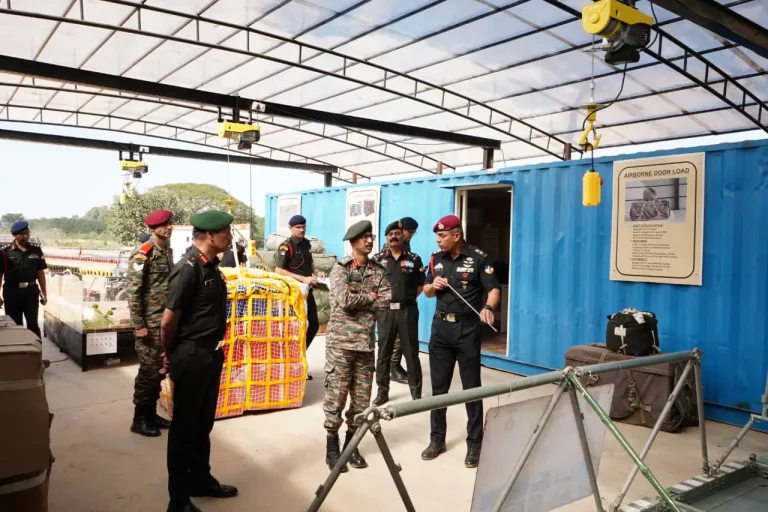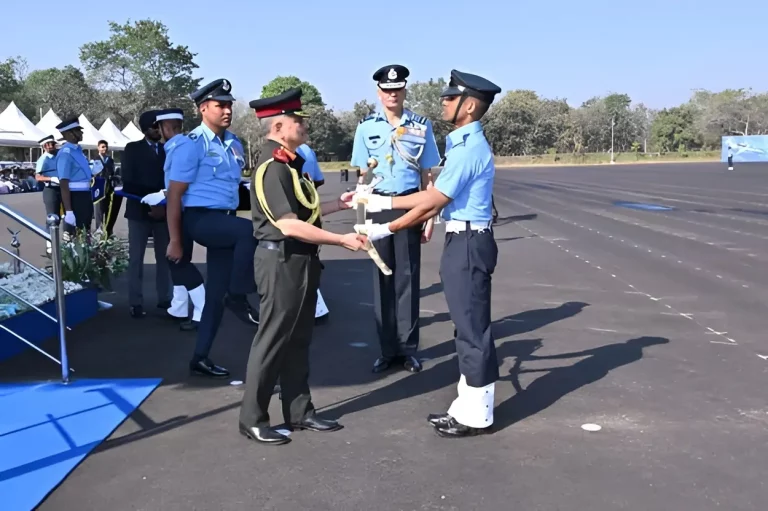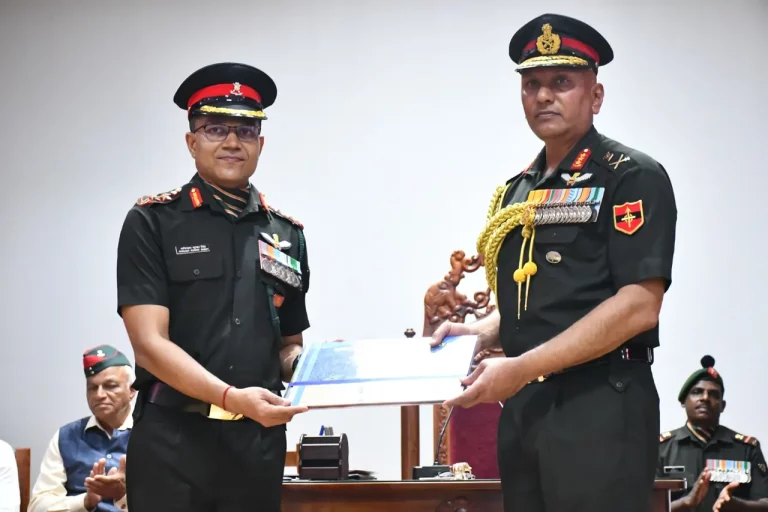On the 21st of May, a glorious era has come to an end with the decommissioning of the first destroyer of the Indian Navy – INS Rajput. INS Rajput, the lead ship of the Kashin-class destroyers built by the erstwhile USSR was commissioned on 04 May 1980 and has rendered yeoman service to the Indian Navy for over 41 years. The ship was decommissioned in a solemn and low key event due to the ongoing COVID Pandemic when the National Flag, Naval Ensign, and the Decommissioning Pennant were lowered at sunset time in the presence of Vice Admiral Ajendra Bahadur Singh, AVSM, VSM Flag Officer Commanding-in-Chief Eastern Naval Command, the Chief Guest for the ceremony. In recognition of the yeoman service rendered to the nation by the ship, a Special Postal Cover was released by the Chief Guest on the occasion. INS Rajput will now be decommissioned at a solemn ceremony at Naval Dockyard, Visakhapatnam. Owing to the ongoing COVID pandemic, the ceremony will be a low-key event attended only by in-station officers and sailors with strict observance of COVID protocols.
INS Rajput was constructed in the 61 Communards Shipyard in Nikolaev (present-day Ukraine) under her original Russian name ‘Nadezhny’ meaning ‘Hope’. The keel of the ship was laid on 11 Sep 1976 and she was launched on 17 Sep 1977. The ship was commissioned as INS Rajput on 04 May 1980 at Poti, Georgia by His Excellency Shri IK Gujral, the Ambassador of India to USSR with Capt Gulab Mohanlal Hiranandani as her first Commanding Officer. Over her four decades of glorious service to the nation, the ship has the distinction of serving in both Western and Eastern Fleets.
With the motto “Raj Karega Rajput” firmly etched in their minds and indomitable spirit, the gallant crew of INS Rajput have remained ever vigilant and always ‘on call’ to protect the maritime interest and sovereignty of the nation. The ship has participated in several operations aimed at keeping the nation secure. Some of these include Operation Aman off Sri Lanka to assist IPKF, Operation Pawan for patrolling duties off the coast of Sri Lanka, Operation Cactus to resolve hostage situation off the Maldives, and Operation Crowsnest off Lakshadweep. In addition, the ship participated in numerous bilateral and multi-national exercises. The ship was also the first Indian Naval Ship to be affiliated with an Indian Army regiment – the Rajput Regiment.
In her glorious 41 years, the ship had 31 Commanding Officers at her helm with the last CO taking charge of the ship on 14 Aug 2019. As the sun sets on 21 May 21, the Naval Ensign and the Commissioning Pennant will be hauled down for the last time onboard INS Rajput, symbolising the decommissioning. The ship since its commissioning has sailed a distance of over 7,87,194 nautical miles which is equivalent to navigating around the world 36.5 times and 3.8 times the distance from Earth to Moon.
INS Rajput was commissioned on 04 May 1980, at Poti, Georgia (erstwhile USSR), as the lead ship of the Rajput Class Destroyers of the Indian Navy with Capt (later Vice Admiral) Gulab Mohanlal Hiranandani as the first Commanding Officer. During her service, the ship had the distinction of being part of both the Western and Eastern Fleets. She was based in Mumbai till Jun 1988 and thereafter was re-based at Visakhapatnam as part of the Eastern Fleet.
Endowed with menacing looks, the ship was equipped with an array of weapons and sensors which included, surface-to-surface missiles, surface-to-air missiles, anti-aircraft guns, torpedoes, and anti-submarine rocket launchers. INS Rajput was also the first ship to be fitted out to fire the supersonic cruise and long-range BrahMos missile. She was also the first Indian Naval ship to get affiliated with an Indian Army Regiment ‘the Rajput Regiment’.
Apart from participating in various naval operations like Op Pawan, Operation Aman, Operation Cactus, and various multinational exercises, the ship was a flag bearer of the Indian Navy’s benign role by participating in various relief operations which include cyclone relief operations off Odisha Coast in 1999, relief operations post Tsunami in Andaman & Nicobar Islands in 2004 and HADR mission after the earthquake at Jakarta.
The decommissioning ceremony was attended by very few officers and sailors from the Eastern Fleet and other organisations of ENC whilst adhering to the COVID protocols. The event was live-streamed on the internet and Naval intranet for the benefit of a larger audience viz., serving personnel, veterans, and outstation ex-crew who had served onboard the ship. The virtual attendees included Vice Adm Atul Kumar Jain, Chief of Integrated Defence Staff to the Chairman Chiefs of Staff Committee, former Commanding Officers and, Officers and Sailors of the Commissioning Crew.
Indian Navy’s first Kashin-Class destroyer INSRajput was decommissioned today after serving the nation for 41 glorious years at Visakhapatnam in a solemn ceremony. 🇮🇳❤️⚔️ pic.twitter.com/4D0CqCaUjD
— SSBCrackExams (@SSBCrackExams) May 22, 2021
















